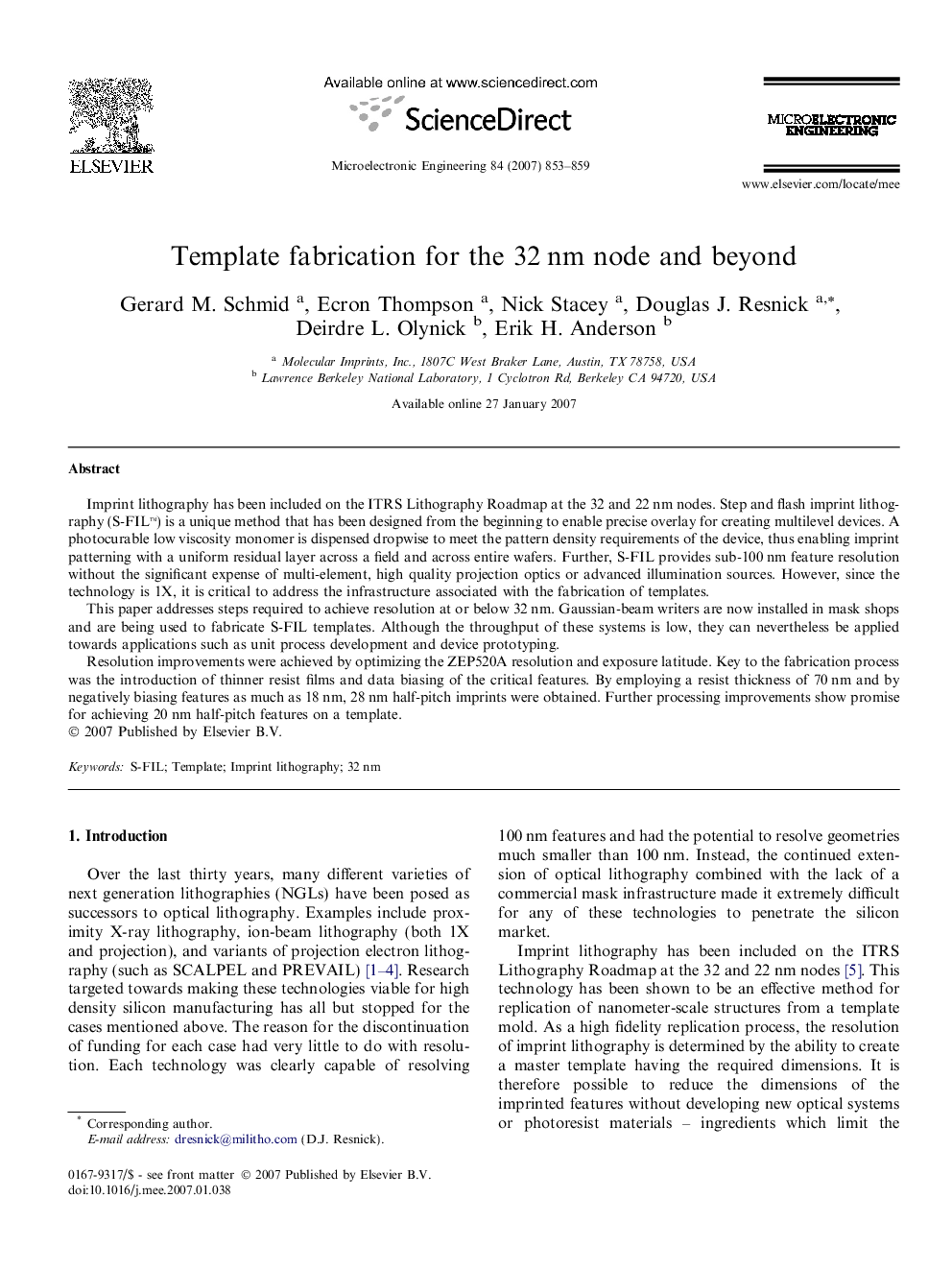| Article ID | Journal | Published Year | Pages | File Type |
|---|---|---|---|---|
| 540072 | Microelectronic Engineering | 2007 | 7 Pages |
Imprint lithography has been included on the ITRS Lithography Roadmap at the 32 and 22 nm nodes. Step and flash imprint lithography (S-FIL™) is a unique method that has been designed from the beginning to enable precise overlay for creating multilevel devices. A photocurable low viscosity monomer is dispensed dropwise to meet the pattern density requirements of the device, thus enabling imprint patterning with a uniform residual layer across a field and across entire wafers. Further, S-FIL provides sub-100 nm feature resolution without the significant expense of multi-element, high quality projection optics or advanced illumination sources. However, since the technology is 1X, it is critical to address the infrastructure associated with the fabrication of templates.This paper addresses steps required to achieve resolution at or below 32 nm. Gaussian-beam writers are now installed in mask shops and are being used to fabricate S-FIL templates. Although the throughput of these systems is low, they can nevertheless be applied towards applications such as unit process development and device prototyping.Resolution improvements were achieved by optimizing the ZEP520A resolution and exposure latitude. Key to the fabrication process was the introduction of thinner resist films and data biasing of the critical features. By employing a resist thickness of 70 nm and by negatively biasing features as much as 18 nm, 28 nm half-pitch imprints were obtained. Further processing improvements show promise for achieving 20 nm half-pitch features on a template.
